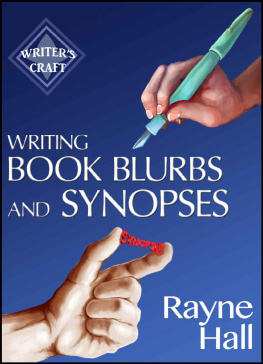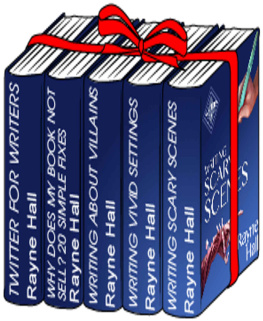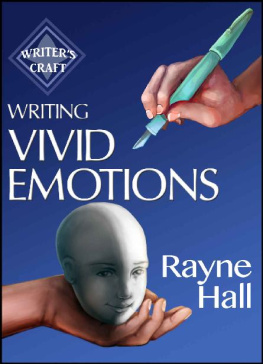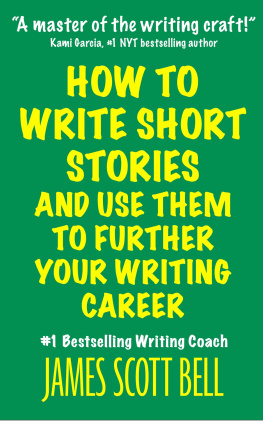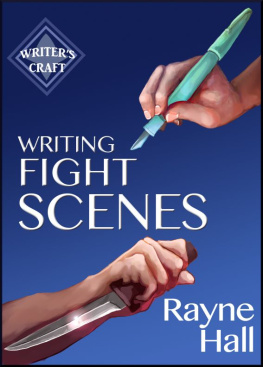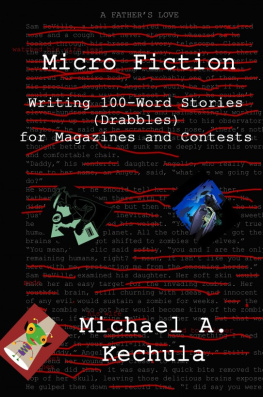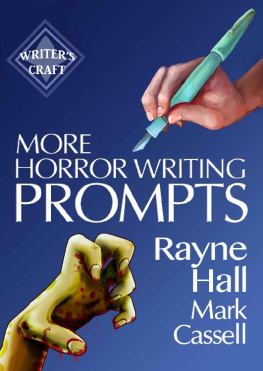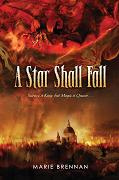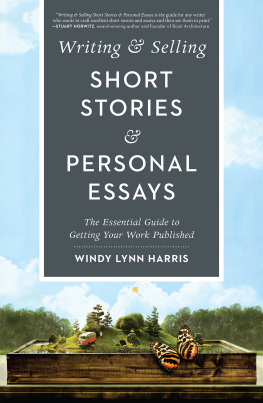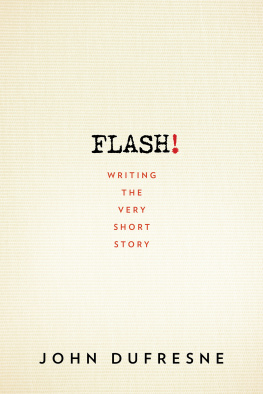Table of Contents
Writer's Craft
5-Book
Power Pack
by Rayne Hall
COMPRISING:
*WRITING FIGHT SCENES
*WRITING ABOUT MAGIC
*WRITING DARK STORIES
*THE WORD-LOSS DIET
*WRITING SHORT STORIES TO PROMOTE YOUR NOVELS

WRITING FIGHT SCENES

WRITING FIGHT SCENES
by
RAYNE HALL
Copyright 2011-2014 Rayne Hall
All Rights Reserved
Cover Art and Design by Erica Syverson
Scimitar Press
January 2014 Edition
This ebook is licensed for your personal enjoyment only. This ebook may not be re-sold or given away to other people.
WRITING FIGHT SCENESCONTENTS
Introduction
1. Gritty or Entertaining?
The gritty fight scene and the entertaining fight scene. Blending entertainment and grit. Which style for which genre? How much violence does a fight scene need? Blunders to avoid.
2. Location
Use the setting to add entertainment, realism and suspense. Blunders to avoid.
3. Structure
A blueprint for your scene in six parts: Suspense, Start, Action, Surprise, Climax, Aftermath.
4. Swords
Three main types: thrusting, cleaving and slashing. Blunders to avoid.
5. Knives and Daggers
Dagger or knife? Concealment. Connotations. Fighting techniques. Blunders to avoid.
6 Staffs, Spears and Polearms
Thrusting and throwing spears. Poleaxes, billhooks, halberds. Blunders to avoid.
7. Clubs, Maces, Axes, Slings and Arrows
Historical clubbing and cleaving weapons. Archery. Blunders to avoid.
8. Firearms
Three main types: rifle, handgun, shotgun. Blunders to avoid.
9. Improvised Weapons
What a resourceful character may use at a pinch, and why readers love it.
10. Magical Weapons and Warfare
Inventing a plausible magical weapon. How to defeat a magician. Magical warfare. Blunders to avoid.
11. Unarmed Combat
Hand-to-hand fighting. Two types: grappling and striking martial arts. Inventing a fantasy martial art. Who wins? Blunders to avoid.
12. Self-Defence
Why readers love self-defence scenes. Self-defence for the skilled martial artists. Self-defence ideas the inexperienced fighter. Blunders to avoid.
13. Strength, Skill and Strategy
How much strength, skill and strategy do fighters need, and where do they get them? Blunders to avoid.
14. Psychological Barriers
Reluctance to fight. Reality shock for martial artists. The 'freeze'.
15. Female Fighters
Reader expectations. Physical and psychological differences. Skills and backstory. Inexperienced female fighters. Different fighting styles. Female curves of arousal. Women and weapons. Female soldiers. Clothing and armour. Blunders to avoid.
16. Male Fighters
Characteristic male dialogue and body language. Skills. Men and their weapons. Male curves of arousal. Men against women. Blunders to avoid.
17. Animals and Weres
How animals fight. Writing from an animal's point of view. Were animals. Animals as weapons: dogs, horses, elephants. Fighting against an animal. Blunders to avoid.
18. Make the reader care
Purpose and motivation. Raising the stakes. Emotion. Stacking the odds. Manipulate the reader's instincts. Blunders to avoid.
19. The Inside Experience
Deep point of view. Using the senses: which sense in which part of the fight? Blunders to avoid.
20. Armour
Historical and modern armour. Shields. Blunders to avoid.
21. Fight Situations
Brawl. Duel. Ambush. Assassination. Riot.
22. Group vs Group, One vs Many
Managing the point of view and reader sympathies. How to make a one-against-many fight plausible. Blunders to avoid.
23. Battles
Plotting and structuring a battle scene. Blunders to avoid.
24. Siege Warfare
Active and passive siege warfare. Blunders to avoid.
25. Nautical Fights
Tips for pirate fights and naval battles. Destroy, plunder or capture? Boat or Ship? Blunders to avoid.
26. Genres
Tips for romance, humour, fantasy, horror, thriller, mystery, historical literary, young adult and children's fiction.
27. Erotic Tension
Hand-to-hand fighting. The erotic connotations of daggers. Male fantasies of female fighters. Post-fight horniness.
28. The Final Showdown
The big fight between the hero and the villain at the end of the book. Blunders to avoid.
29. Pacing
Tricks for fast pace. Word choices and sentence structures. When and how to slow the pace. Blunders to avoid.
30. Euphonics
Subtle techniques for creating a mood of foreboding, fear, hard action, defeat or victory.
31. Sabre-Sharp Dialogue
How to make it sound real. Witty zingers. Catchphrases. Blunders to avoid.
32. Background Music
Tunes to put you in the mood.
33. Research
Where to find out more.
34. Excerpts
Two fight scenes by Rayne Hall: excerpts from Storm Dancer and Scylla and the Pepper Pirates.
INTRODUCTION
This book will help you to write a fight scene which is entertaining as well as realistic, and leaves the reader breathless with excitement.
You may be clueless about fighting matters, as many authors are. The book will show you step-by-step to write plausible fights and avoid blunders.
On the other hand, you may be a skilled martial artist, a military historian or a combat veteran. Then the book will guide you to turn your knowledge into vivid fiction.
I'll give you a six-part structure to use as blueprint for your scene, and reveal tricks how to combine fighting with dialogue, which senses to use when and how, and how to stir the reader's emotions. You'll decide how much violence your scene needs, what's the best location, how your heroine can get out of trouble with self-defence and how to adapt your writing style to the fast pace of the action. There will be sections on female fighters, male fighters, animals and weres, psychological obstacles, battles, duels, brawls, riots and final showdowns. For the requirements of your genre, there is even advice on how to build erotic tension in a fight scene, how magicians fight, how pirates capture ships and much more. You will learn about different types of weapons, how to use them in fiction, and how to avoid embarrassing blunders.
A few years ago, when I struggled with my fight scenes, I looked for guidance and found none. So I set about discovering for myself what makes a great fight scene. I studied famous fight scenes in classic literature and in modern thrillers, observed their structure and analysed their techniques. Armed with these insights, I wrote fight scenes which enthralled the readers. Before long, other writers asked me to help me improve their fights. From there, it was a small step to teaching online classes in Writing Fight Scenes. All the time, I continued studying the subject and adding to my knowledge.
When I look back on my early fight scene attempts, I cringe - the mistakes are so glaring, the structure so awkward, the style so embarrassing. Now I know how to make a fight scenes work, and I want to share these techniques with you.




